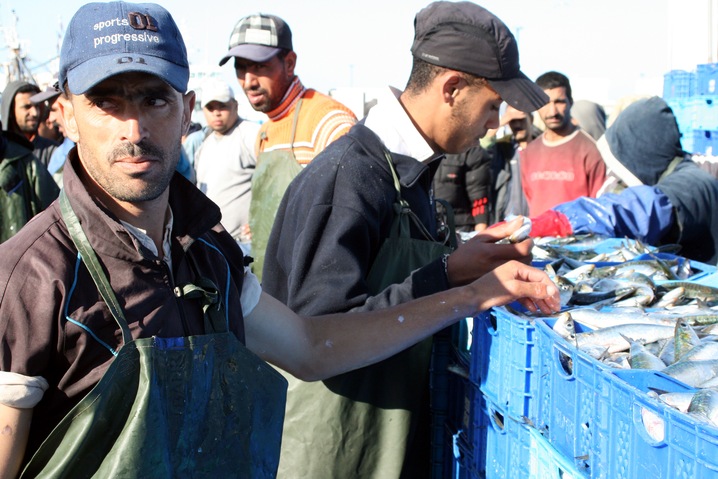By: Andrew Jarnagin

The events of the Arab Spring that culminated in the ousting of heads of state across the Middle East and North Africa must have raised the blood pressure of the region’s monarchs by more than a few points. Amazingly, though, the anger generated in these uprisings was not enough to topple a single monarchy. Hereditary kingships from Saudi Arabia to Jordan to Morocco have prevailed over revolutionary elements within their societies. They have retained their grip on power through a combination of handouts, subsidies, and limited reforms. This article examines the personalities and strategies of several monarchs responding to unrest.
Morocco
Shortly after his ascension the throne in 2000, Time Magazine ran an article about King Mohammed VI of Morocco entitled “The King of Cool.” His primary choices in dress are immaculately tailored suits and Nike muscle shirts. Largely trained in the Moroccan education system and under his father’s tutelage, he also apprenticed under a former president of the European Commission and obtained a PhD in law at a French university.
Shortly after taking office, the young king established an Equity and Reconciliation Commission to investigate the excesses that occurred under his father’s reign. He also began dismissing powerful career politicians and bureaucrats suspected of graft. More recently, Mohammed proposed reforms approved by the public that include greater judicial and legislative independence, increasing governmental recognition of the indigenous Berber population, and creating greater protections for freedom of expression.
However, many activists believe that the moves to relinquish power are cosmetic, and that the extremely deep-seated corruption among the elite is not being addressed. Morocco, a country seen in a positive light by both the Western and Arab worlds, struggles with widespread illiteracy and unemployment, in addition to corruption. But Mohammed VI is generally popular; Moroccans see him as a benevolent and honest reformer intent on improving the lives of his people.
Saudi Arabia
King Abdullah bin Abdul Aziz strikes a very different pose than his fellow reformers. He wears the thwab, a piece of traditional Saudi dress, rather than a tailored suit. Abdullah also has the advantage in years – 88 last August. He doesn’t evoke the image of the reformer, and his record is mixed. Critics assert that the political system has remained the same despite cosmetic reforms. There are signs, though, that Saudi Arabia is slowly experiencing a sea change in some of its long-held traditions.
Just two weeks ago, King Abdullah appointed 30 women to the Shura Council, the king’s consultative chamber and a rough equivalent of a legislative branch. They are the first women ever appointed, and include several human rights activists. The Council has very little tangible power, but can propose and draft laws for the King’s perusal. Since coming to power, Abdullah has also granted women’s suffrage, stating “we refuse to marginalise women’s role in Saudi society.”
Abdullah has also used his country’s oil wealth to placate the population and improve living standards. He has pledged $110 billion on social programs, housing, and job creation. Though he never studied in the Western world, Abdullah established a scholarship program that has sent over 70,000 Saudi students abroad for higher education, and most have traveled to the U.S., England, and Australia.
Jordan
Like his counterpart in Morocco, King Abdullah II ibn Al-Hussein wears a suit; he also studied at Oxford and Georgetown University. He loves Star Trek and was featured in an episode before becoming king. Abdullah also enjoys skydiving, rally racing, and driving motorcycles. Jordan remains a monarchy, but Abdullah has expressed his desire to make Jordan a democratic country. He has begun to consult parliament in selecting a prime minister, and has voluntarily implemented constitutional reforms returning some of his own power to the legislature.
However, the Jordanian king lacks the natural resource wealth to provide economic handouts to his citizens. After cutting fuel subsidies as part of an IMF austerity plan, large street protests erupted. He also faces a significant problem in the 350,000 Syrian refugees that have crossed the border to escape their civil war. The political scene is not free from turbulence either: the Islamic Action Front, the Muslim Brotherhood’s political wing in Jordan, boycotted recent elections to protest the gerrymandering that under-represents Palestinians in favor of the monarchy’s rural Bedouin base.
Thus far, all three monarchs have been successful in using the carrot rather than the stick to stay in power. Saudi Arabia has taken steps to assist a monarch in economic trouble with a budget assistance package totaling $500 million. That should delay a painful reckoning with unsustainable subsidies for now, but Jordan is not out of the fire yet.
Necessity and an evolving culture have pushed these three monarchs to loosen their grip on power. It remains to be seen whether the reforms are cosmetic, or part of a larger shift toward democracy. Saudi Arabia’s royal family has far too much cultural influence and wealth to fear a large uprising. Morocco has a deep love and respect for the royal family, and the public is likely to continue to support the king. But Jordan is on the brink, and is likely to remain so until it successfully weathers austerity or succumbs to an Egypt-style revolt, potentially spurred by its Muslim Brotherhood party. The world should hope another unpredictable revolutionary government does not replace that Abdullah’s gradual reforms. Jordan’s stability and role as a mediator in the midst of several failing states is invaluable to the region.

